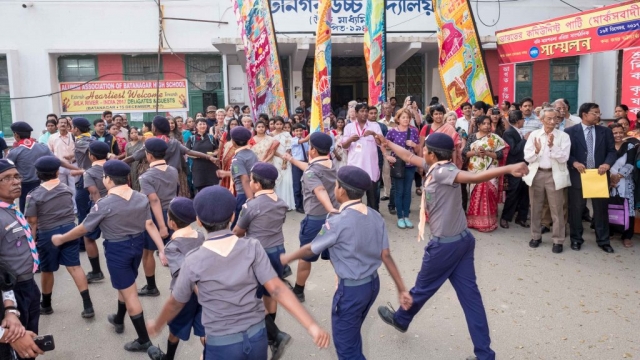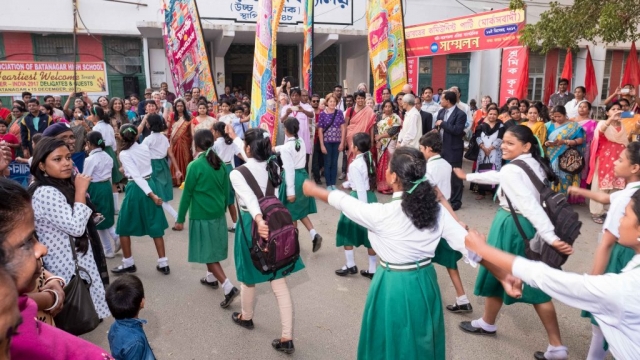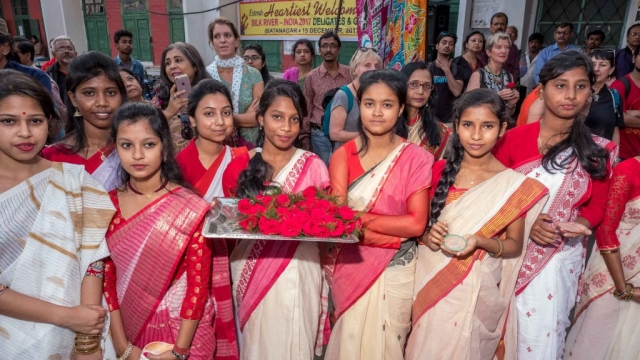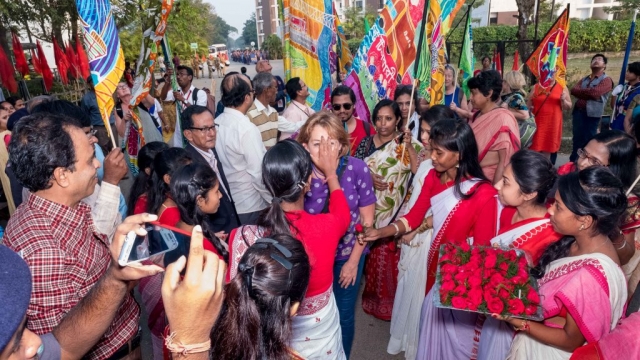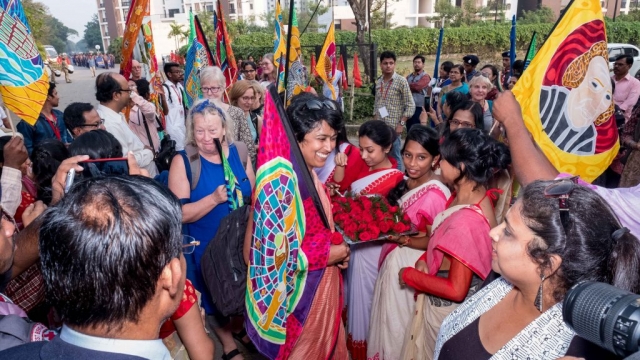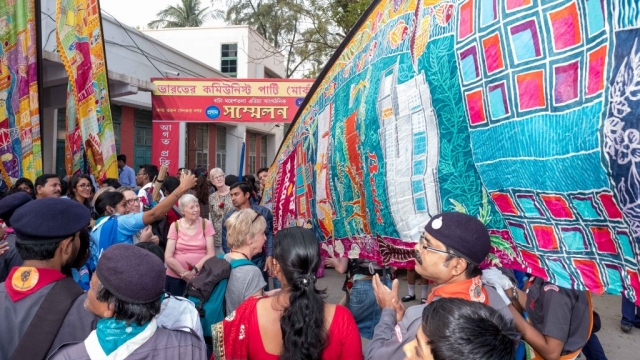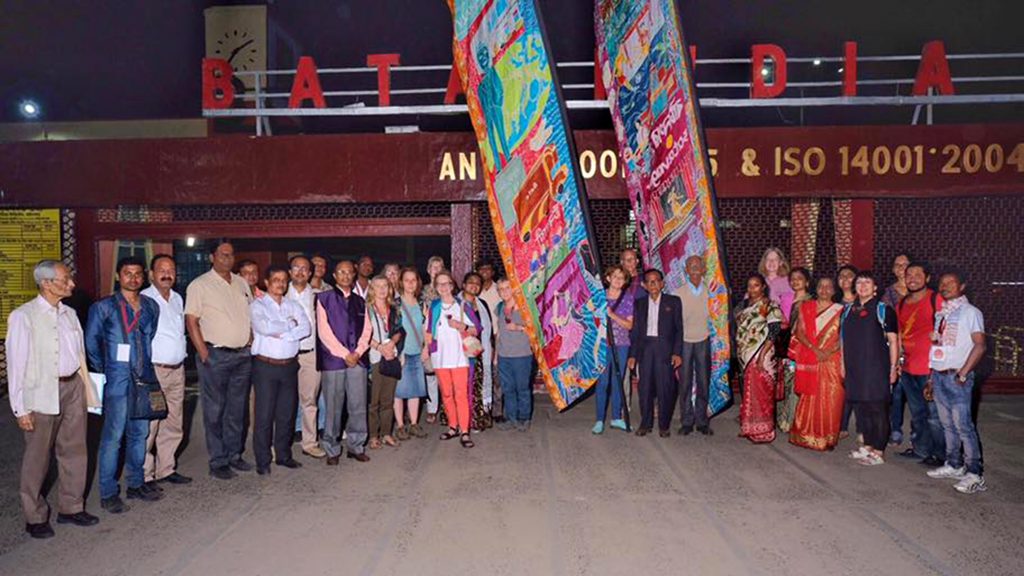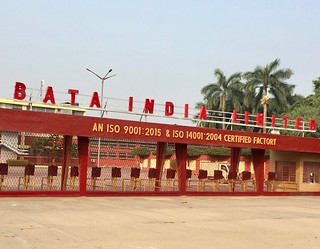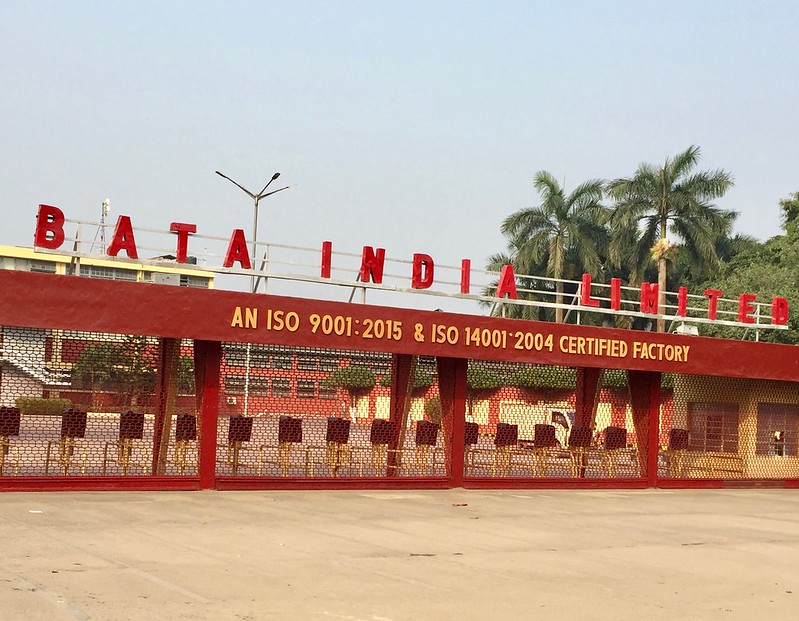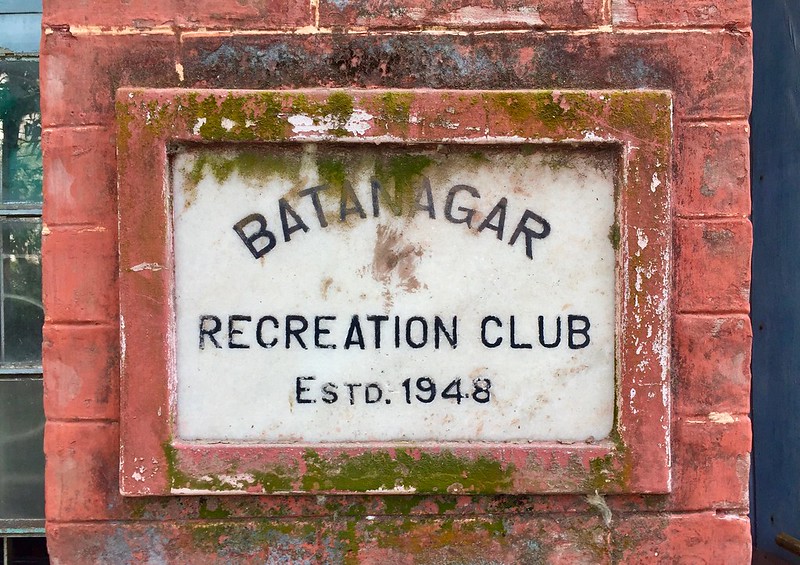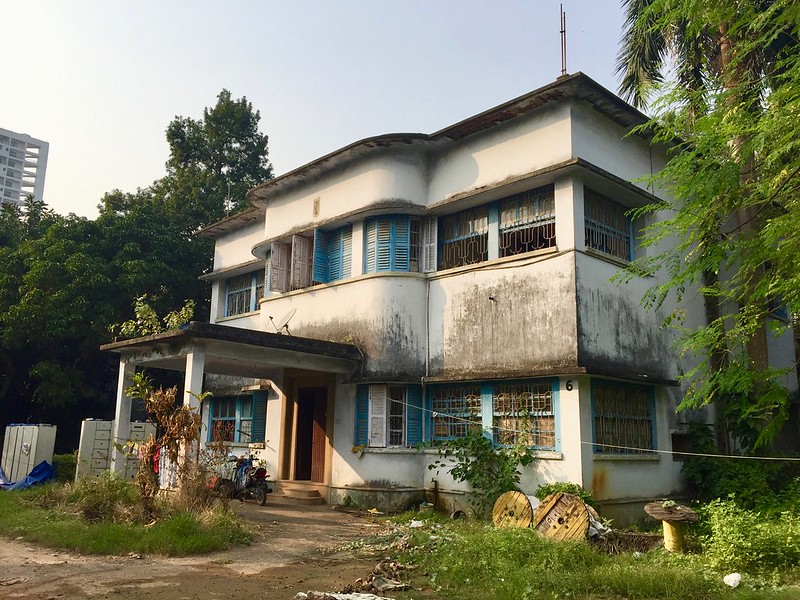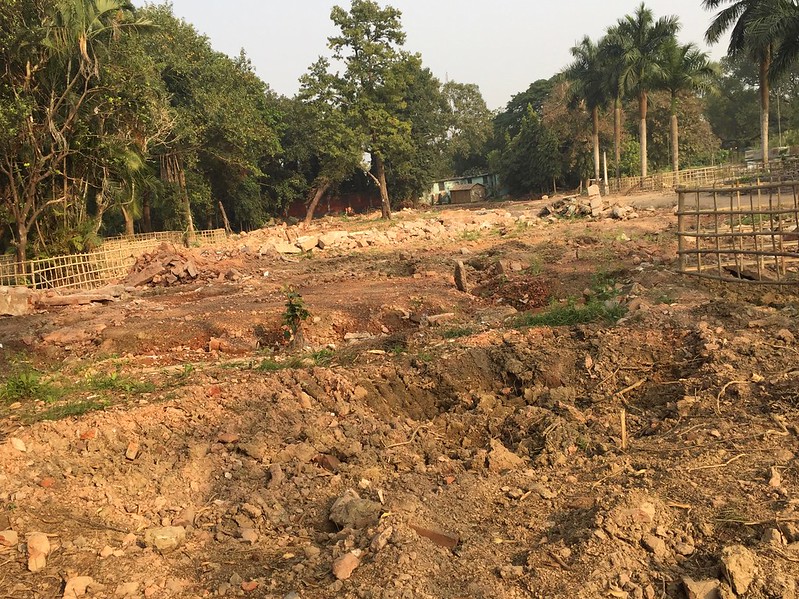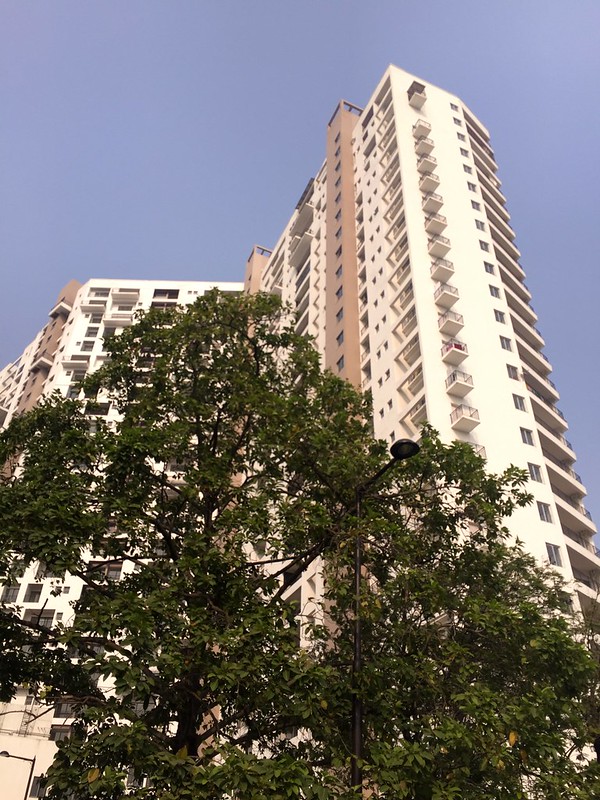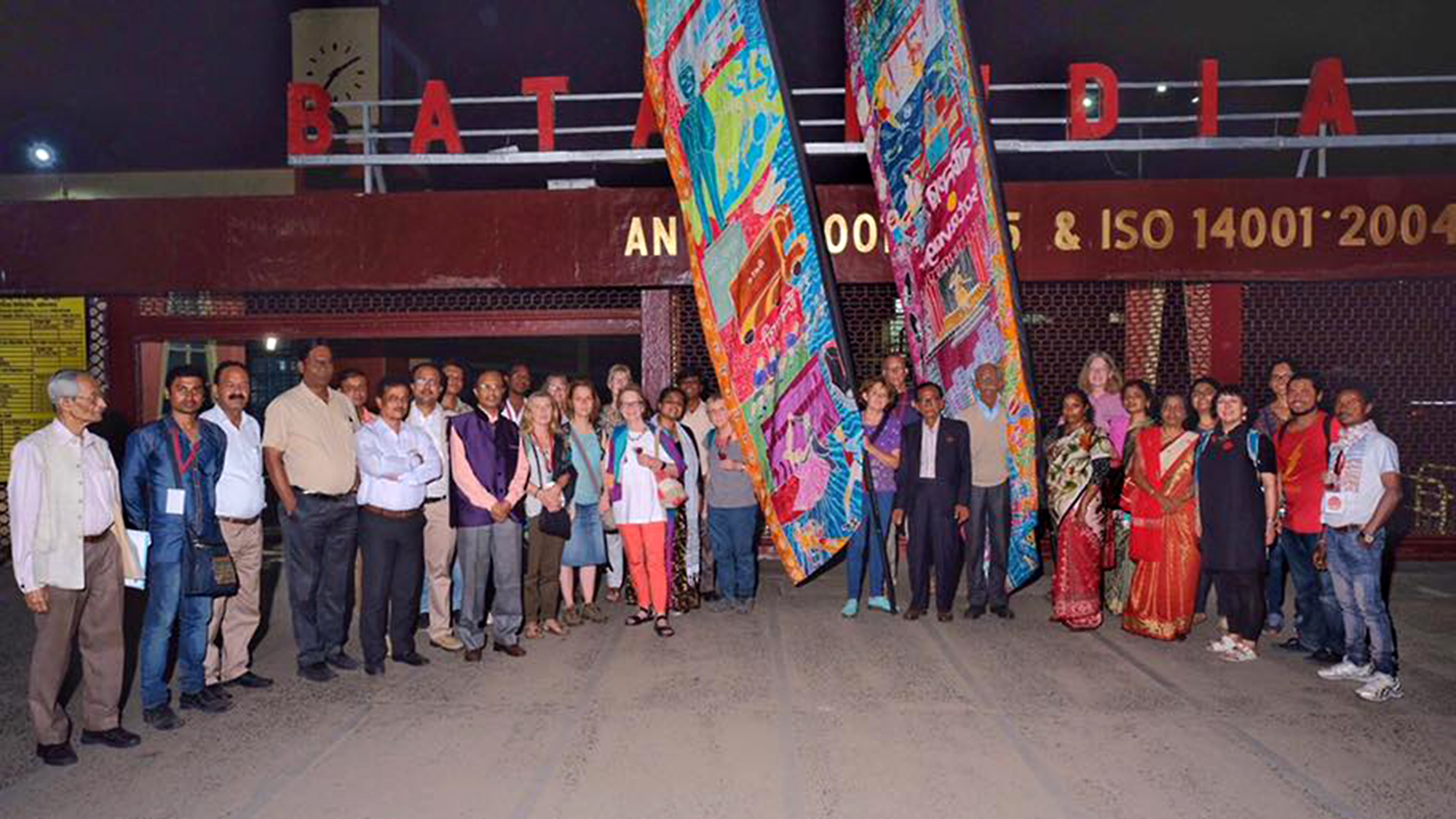
India Day 10 – Part Two: Batanagar
India Day 10 – Part Two: Batanagar
You would think the Kidderpore tour was enough for one day, but our Silk River journey included one more wonderful and interesting visit, to Batanagar.
Batanagar’s women and girls greet our arrival with the glorious sounds of ululation, the trumpeting of conch shells, red roses and a sandal paste ‘tilak’ on our foreheads. Batanagar High School’s marching bands of scouts, guides and cadets process us up to the entrance for welcome speeches and to exchange their silk scroll stories with those of East Tilbury.
Established as the first shoe factory in India by Czechoslovak industrialist Tomas Bata, Batanagar’s factory was opened in 1936 by Nobel Laureate Rabindranath Tagore. The Bata family were guided by their founder’s moral testament that the Company was to be treated not as a source of private wealth, but as a public trust, a means of improving living standards within the community and providing customers with good value.
Like the ‘Bata-ville’ in East Tilbury, Essex, Batanagar provided a whole eco system around the factory to support workers and their families, including housing, schools, shops, culture and sports facilities. Whilst this Bata India factory continues to invest in new buildings and machinery, its workforce has dwindled from a peak of 25,000 to under 1800 today and the community is facing the challenges of globalisation and regeneration. The workers’ housing has been demolished and private developers have built 100s of high-rise, high-end apartments for city commuters. A new by-pass is under construction and the marketing material extols the attractions of the riverside location. Is this sounding familiar?
“Since the Riverside project started, the Batanagar we know so well is not the same anymore” says Papia Sarkar, a board member of the Batanagar Boys School Alumni Association. Like many of the people I speak to today, her father and grandfather worked at Bata. They are tremendously proud of their history, their social heritage and culture. I ask several of the new residents if they will send their children to the school. “We hope so”, comes the uncertain answer.
On a tour of one of the production lines, we see some of the processes involved in making their classic white canvas tennis shoes. They are “cooked” in an enormous vulcanizing oven for several hours, long enough for the rubber and canvas to fuse together. The manager tells us that several of their classic lines are always in production but increased competition means they need to diversify their products and their markets. ‘We have to change and be close to the market. We have to invest in new ideas and styles, product development and new technology.” I ask him about the word ‘Kaizen’ displayed on several signs on the factory floor. It’s a Japanese word, meaning ‘change for the better’, he explains. ‘Small changes can have a huge impact and bring about a huge change in culture in the workforce”. The workers are asked to suggest small adjustments and improvements to improve safety, productivity, motivation, delivery, quality and cost. All the suggestions that are implemented are displayed regularly. On the factory floor, this approach seems to be working. Signs on each line proclaim the target figures, the actuals and the productivity percentage, which ranged from 101.1% to 118.7%.
Continuing to pull out all the stops, our hosts take us to their theatre for snacks and a fully comprehensive cultural programme. It includes folk dance, music, poetry and the spectacular Raibeshe Battle Dance. Performed by fifteen athletic men, members of the local branch of the Bratachari youth movement, the performance reminds us in turns of the Maori Hakka and breakdance. At the end we all end up on stage, sharing the mic, thanking each other and enjoying ‘just one more’ anecdote from the Alumni Association elders.
What a community, what spirit. Heritage isn’t only about buildings. It’s about culture and memories, the things we can’t see.
Elizabeth Lynch
Silk River Interactive Scroll
Explore the Batanagar Scroll through the art, images and reflections of the people that made it possible.
Photos below are from a research trip to the area by Ali Pretty & Mike Johnston.


